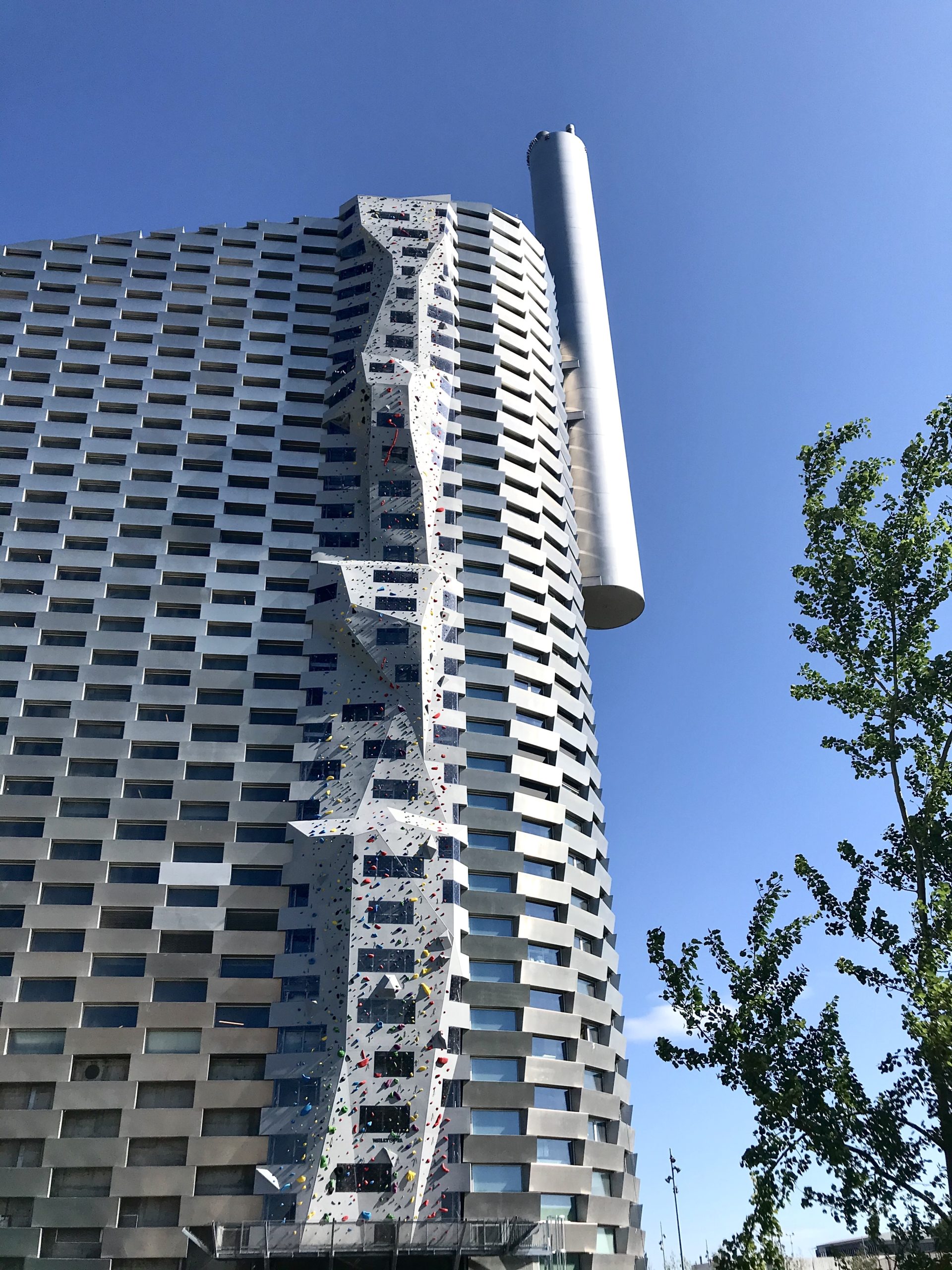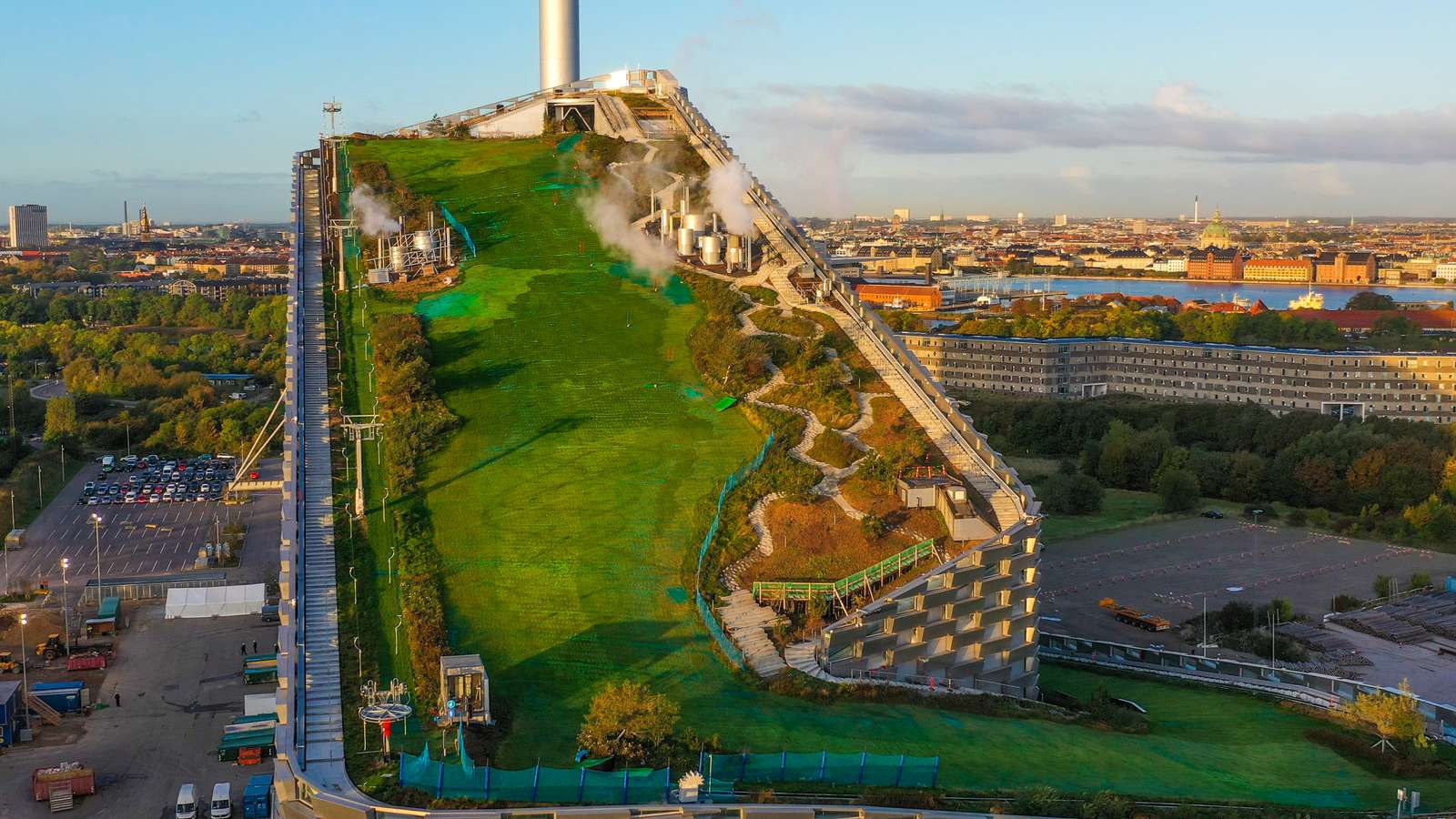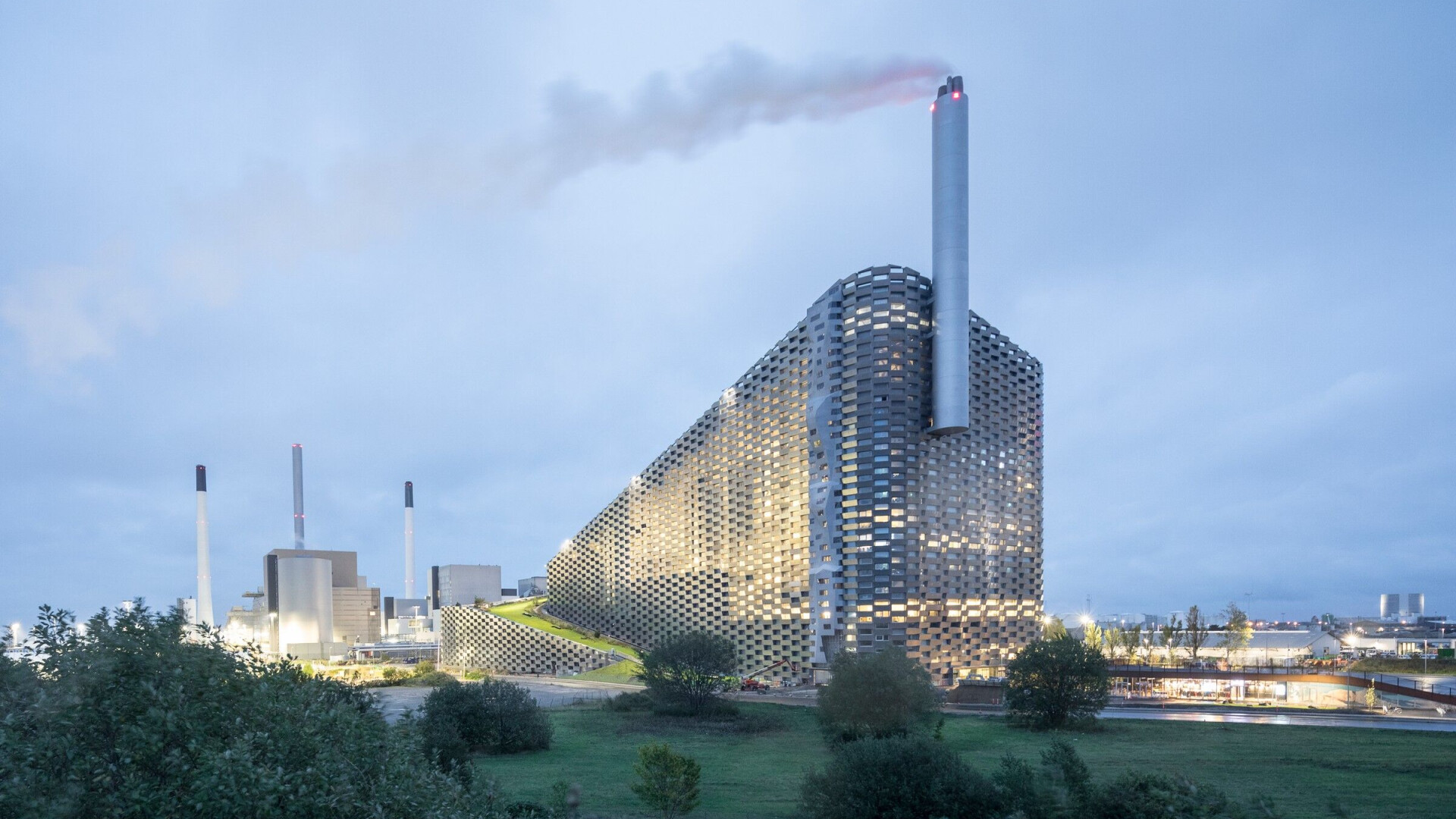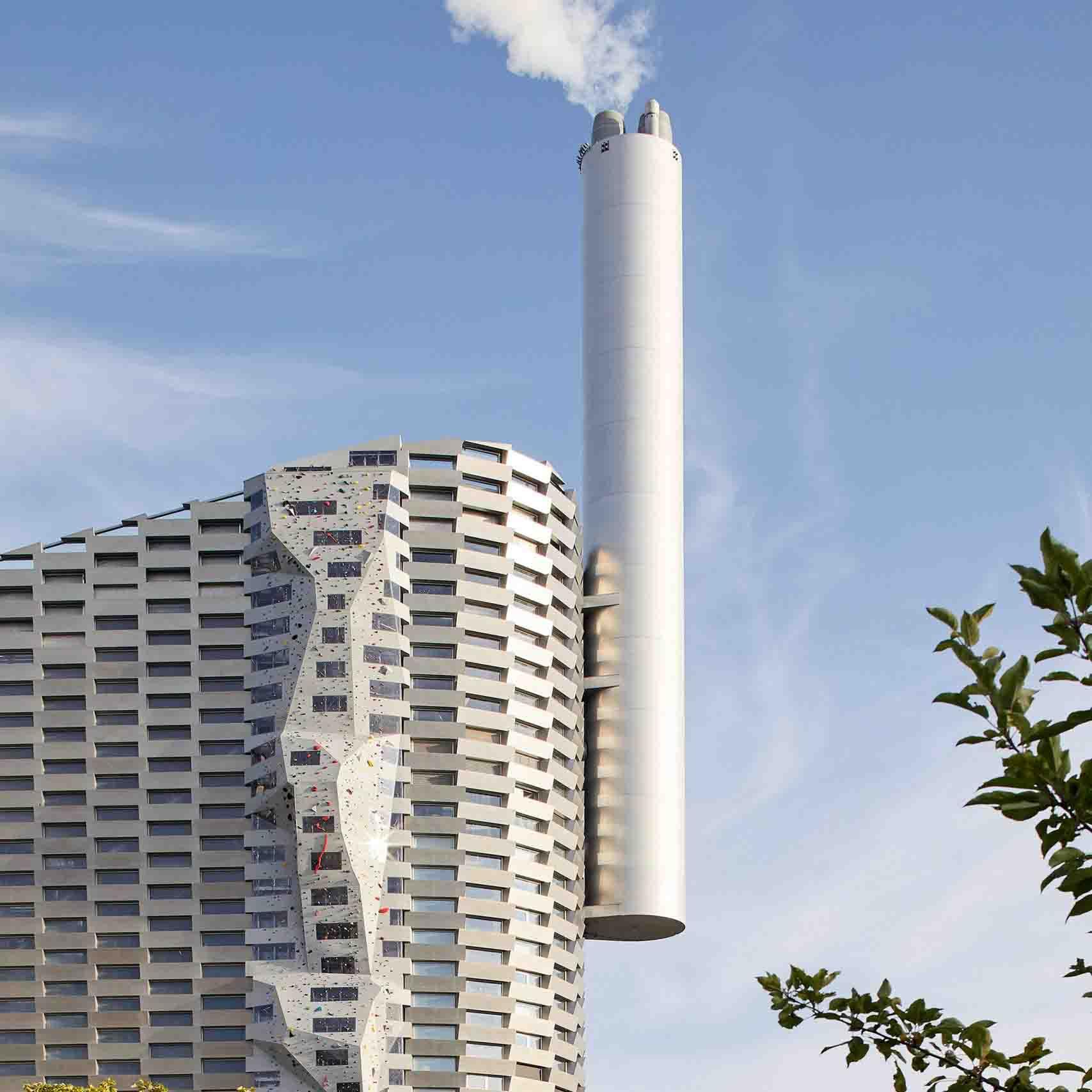The hope is that CopenHill will be a showcase for possible advances in architecture and sustainability while offering enjoyment for its visitors. We think they are well on their way!
Architecture
A power plant, not it’s a… climbing wall!

Climbing enthusiasts are in for a treat… recently, Copenhagen opened the world’s largest man-made climbing wall. CopenHill stands 279 feel tall and was designed by Bjarke Ingels Group (BIG), an architectural firm with offices in both New York City and Copenhagen. The wall is 33 feet wide with many different obstacles along the way upward.
BIG designed and styled the climbing wall to resemble a natural mountain face with various overhangs and different “routes” to the top. The higher you climb, the harder it gets so not everybody is able to make his or her way to the apex. For safety reasons, those under 18 can only climb multi-pitch areas with an experienced adult over 21… and both must be certified.

CopenHill hopes to attract up to 300,000 visitors each year.
Image courtesy of: CPH, photographed by: Max Mestour and Amelie Louys
CopenHill is a fabulous multi-functional center that offers year-round skiing, running, hiking, tobogganing, and apres-ski activities. The athletic facility opened two years ago and is built on top of a power plant that services 50,000 homes each year. Amager Bakke, the power plant, is considered to be the cleanest waste-to-energy power plant in the world.
The city has a quest to minimize energy consumption and plans to become carbon-neutral by 2025. CopenHill serves as a reminder to the city’s residents to stay environmentally conscious. The chimney on top releases big smoke rings each time an additional 250 kilos of carbon dioxide are emitted into the atmosphere. Projects such as these help with Copenhagen’s plan of completely weaning off of fossil fuels by 2050.

CopenHill at dusk…
Image courtesy of: ArchHello
Jakob Lange, a partner at BIG said (courtesy of an interview with Elizabeth Stamp for Architectural Digest), “The climbing wall is located on the tallest corner of the waste-to-energy plant, which is also the busiest corner of the building where skiers, joggers, and workers all cross each other during the day. We teamed up with the Danish Climbing Association to ensure input from the most skilled climbers in the country.”
Walltopia, a Bulgarian company, helped to design CopenHill’s wall; the firm has a lot of experience in the field as they’ve created climbing structures in more than seventy countries around the world. Lange continues, “From BIG’s point of view, we wanted to create a climbing wall that was truly integrated into the architecture. The waste-to-energy plant’s façade is built from large aluminum bricks that allow daylight to enter the plant, and we therefore invented a semitransparent climbing wall with two-thirds solid panels and one-third acrylic windows for the climbing route setters to integrate in their lines.”

The building’s sleek appearance needed to be matched its environmental functionality.
Image courtesy of: UBM Management
Fiberglass panels were used to complement the aluminum bricks, however, they also provide a more stable climbing surface. The acrylic windows allow climbers to peek inside. Every single detail was thoroughly planned out… there has been plenty of time to mull this over. This idea was initially discussed in 2011.
The wall is made up of four distinct sections, each roughly 65 feet. In describing it, Vasil Sharlanov, Walltopia’s head of sales said, “This is not a typical wall. For example, [normally] when you climb, you rely on the rope and belayer to protect you in case you fall. However, there isn’t a rope that’s long enough to climb such a high wall.” Climbers must stop on each ledge to rest and pull up the rope.
CopenHill will mean different things to different people. Ingels, the chief architect said (courtesy of ArchDaily), “To me, CopenHill is a perfect example of the world changing power of architecture. That we have the power to give form to the future that we want to live in. My son turns one next month – he won’t ever remember that there was a time when you couldn’t ski on the roof of the power plant – or climb its facades. He will take that for granted – and so will his entire generation. Clean energy and skiable power plants is going be the baseline of their imagination –the platform from which they will leap and propose new and wild ideas for their future. Standing at the peak of this humanmade mountain that we have spent the last decade creating – makes me curious and excited to see what ideas this summit may spark in the minds of future generations.”
